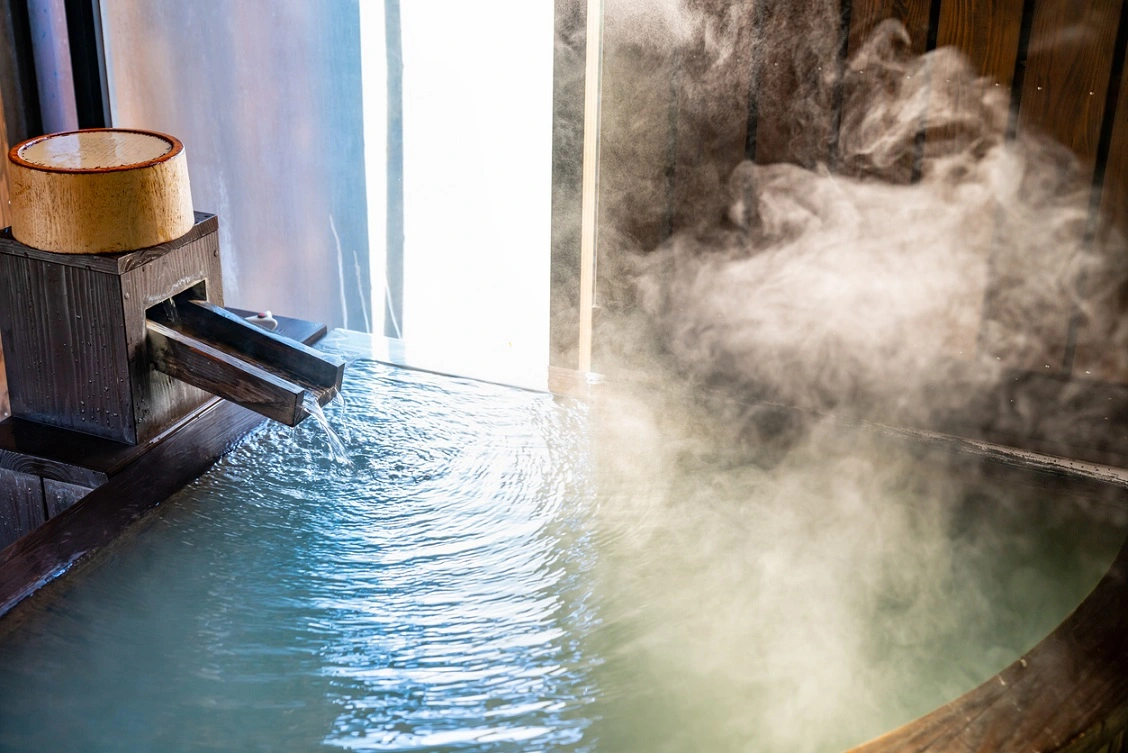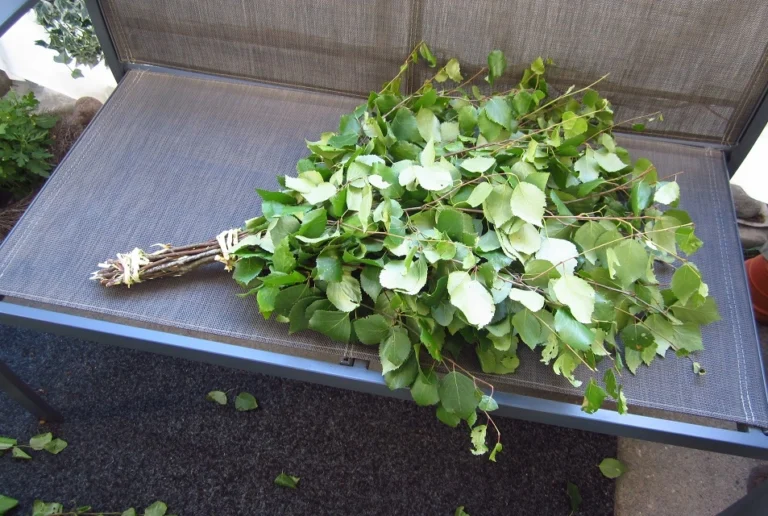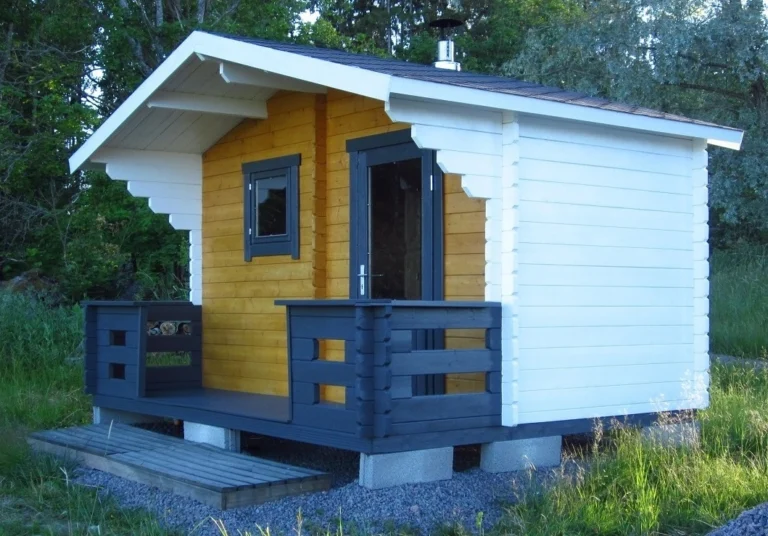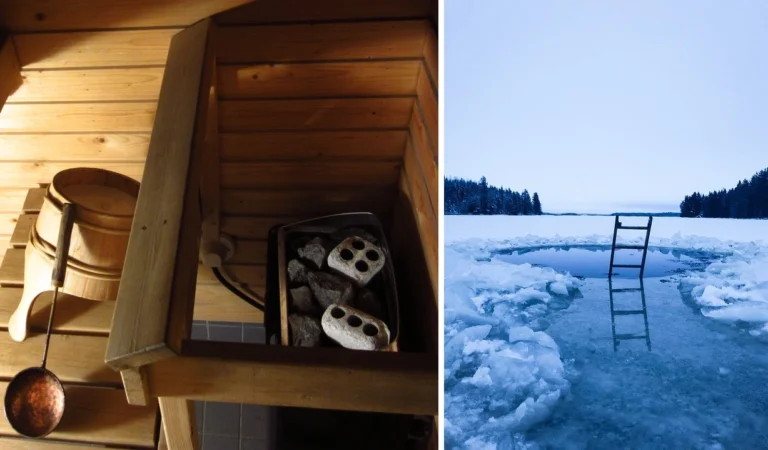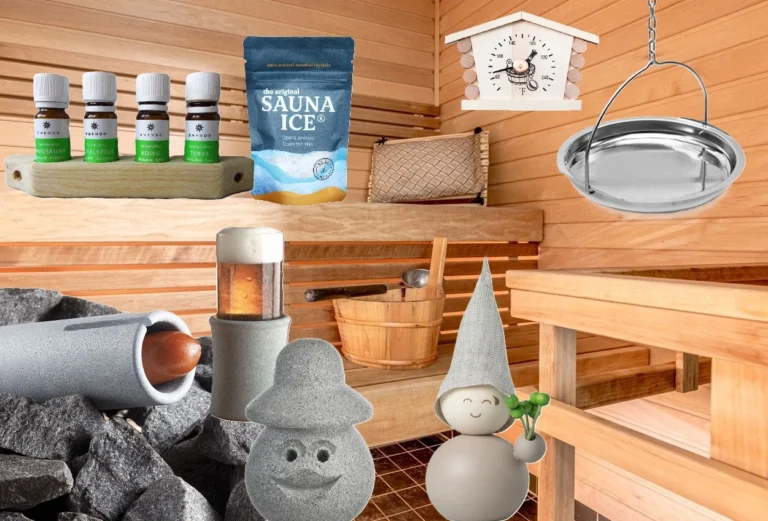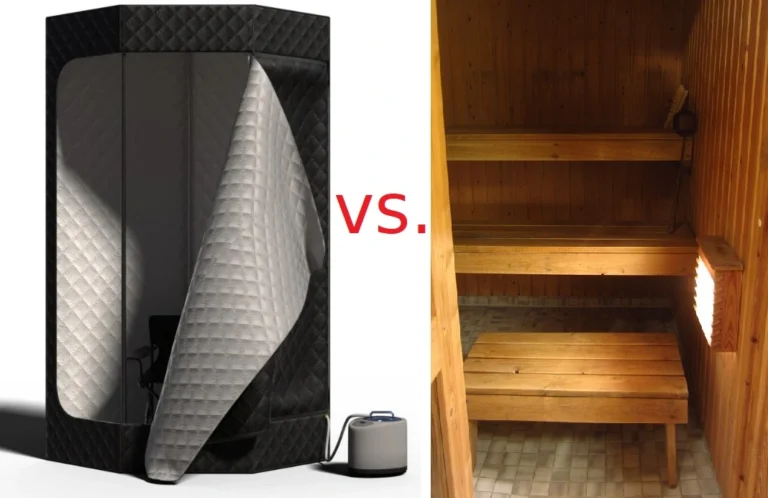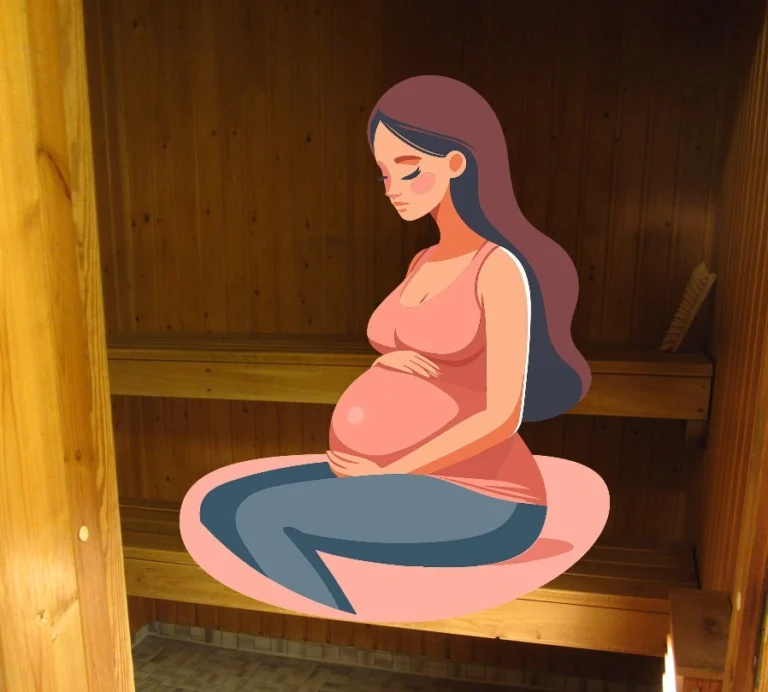Sauna in Japan: 11 Bare Facts about Japan’s Sauna Obsession
If you know a thing or two about saunas, you may have heard that people in Japan are interested in the Finnish sauna more than ever before.
I recently read an article that confirms this: sauna in Japan is a booming trend that has nearly 17 million (!) sauna-goers learning how to pour löyly (Finnish for steam that forms when you throw water on the hot sauna rocks).
The Japanese also have their own sauna rituals alongside their very long tradition of taking hot baths (onsen and sentō).
Let’s see what the fuss is all about and how well the Japanese have adopted Finnish sauna culture into their busy lives.
I’ll also give you some tips on where to go in Japan if you’re interested in experiencing Japanese bath houses with saunas some day.
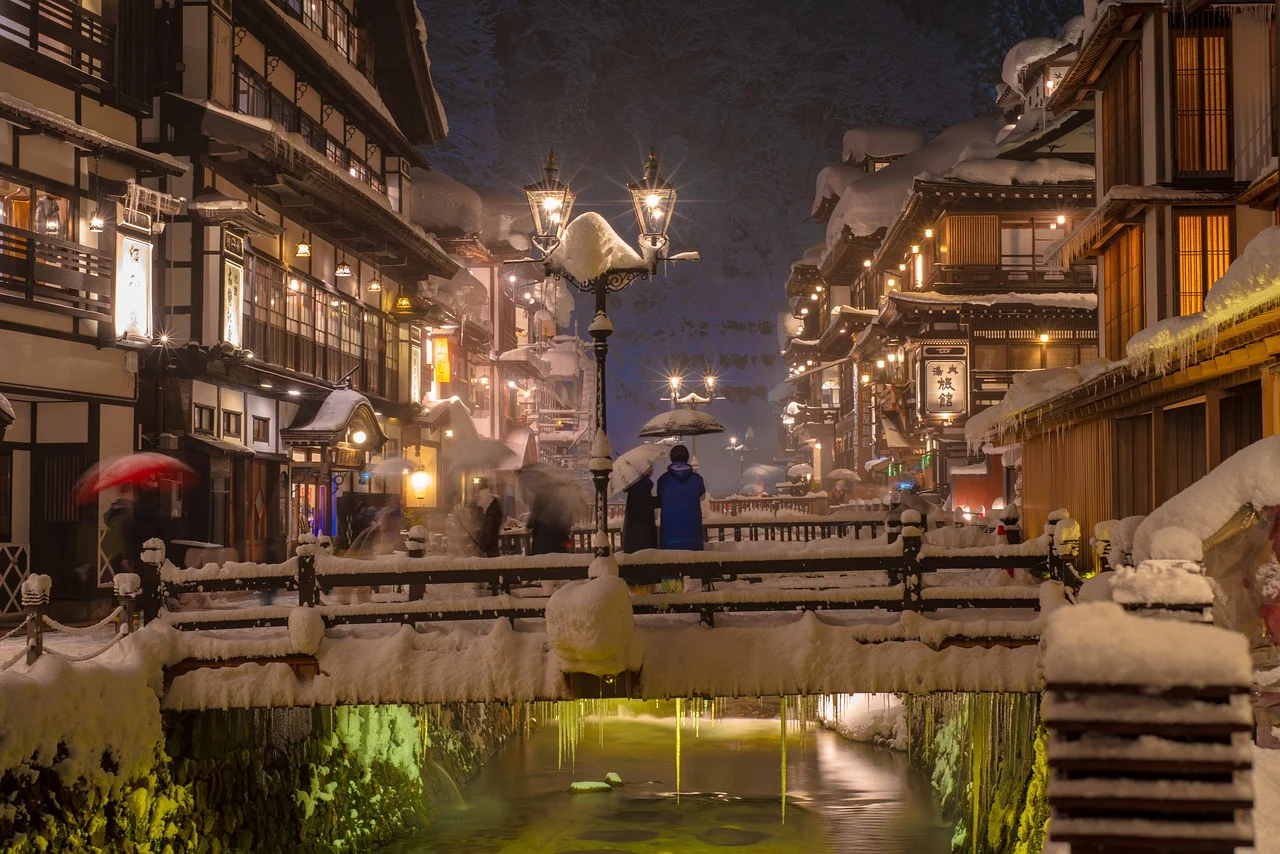
Japanese Sauna Info, Trends, & Peculiarities: 11 Facts about Sauna in Japan
1. Sauna = Finland
Everybody in Japan knows saunas come from Finland which is also seen as the #1 country to follow with anything sauna-related.
Is sauna popular in Japan? Yes, one of the biggest reasons sauna became such a hit in Japan is a sauna-themed manga called Sado (The Way of Sauna), created by Katsuki Tanaka in 2016 and turned into a TV series in 2019.
Tanaka’s Sado manga is partly based on real events, with the main character studying the true essence of sauna. Sa- means sauna while -do means a life-long path of learning.
Later a bizarre sauna commercial was made, featuring a trance-like state saunaing and bathing brings you, combined with a Yamaha scooter, heavy metal (with Finnish subtitles), Gangnam style beats, and a tune that sounds like a children’s ditty.
Katsuki Tanaka himself also plays a minor role in this catchy chaos:
2. Reason for saunaing
The Japanese have fully adopted and embraced the relaxing nature of saunas. Many like to sauna after a hectic workweek and reset their mind.
In Japan, sauna offers escape from everyday life and makes it easier to find peace. Combining sauna with cold plunging, which is very typical in Japan, helps you to forget all your troubles and remove stress.
As Finland is the happiest country in the world, some researchers think people in Japan are also drawn to the idea of work-life balance that’s more present in Finland than in Japan. Saunas are a part of that balance.
Feeling a connection to nature has also grown increasingly important for sauna-goers in Japan, which is why outdoor saunas, especially sauna tents, have become more common.
3. Doing weird things in the sauna
Decades ago, the behavior that was common in sauna in Japan would have had Finns’ eyes rolling: the Japanese read newspapers, shaved their beard, and dried laundry in saunas.
Nowadays there are more rules: people shower before going to sauna and keep the sauna clean.
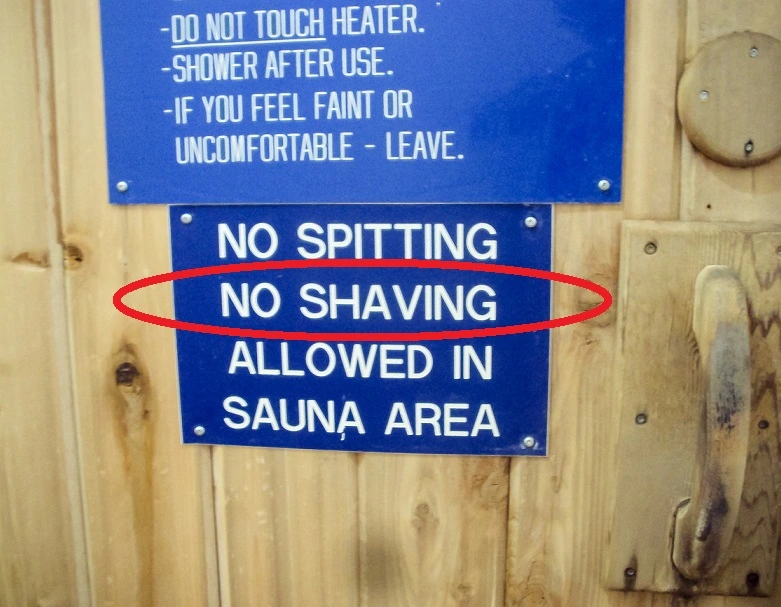
(For safety reasons, NEVER dry laundry in the sauna, regardless of which country you live in or are visiting! It’s a fire hazard that has led to several deaths among immigrants who don’t understand how saunas work.)
4. Watching TV while saunaing
Television is a common device in sauna in Japan although a slight shift can already be seen.
In 2018, a Japanese sauna manufacturer Metos reported that 90% of their customers order a sauna with a TV.
This could easily be seen in practice, too: LaQua Spa in Tokyo, for instance, had an electric sauna heater in their sauna, hidden from users behind a wood fence, making it impossible to throw water and get löyly, but what it had instead was a TV mounted on the wall blasting a local entertainment show.
Since then, TVs have become slightly less popular as Japan has successfully adopted a more nature-inspired sauna culture. The biggest sauna fans, sauners, avoid saunas with TVs.
The original sauna manga writer Katsuki Tanaka doesn’t endorse TV saunas either: “What would Finns say if they knew,” is what he asks in one of his works.
They would be flabbergasted just like I and my Finnish roots were!
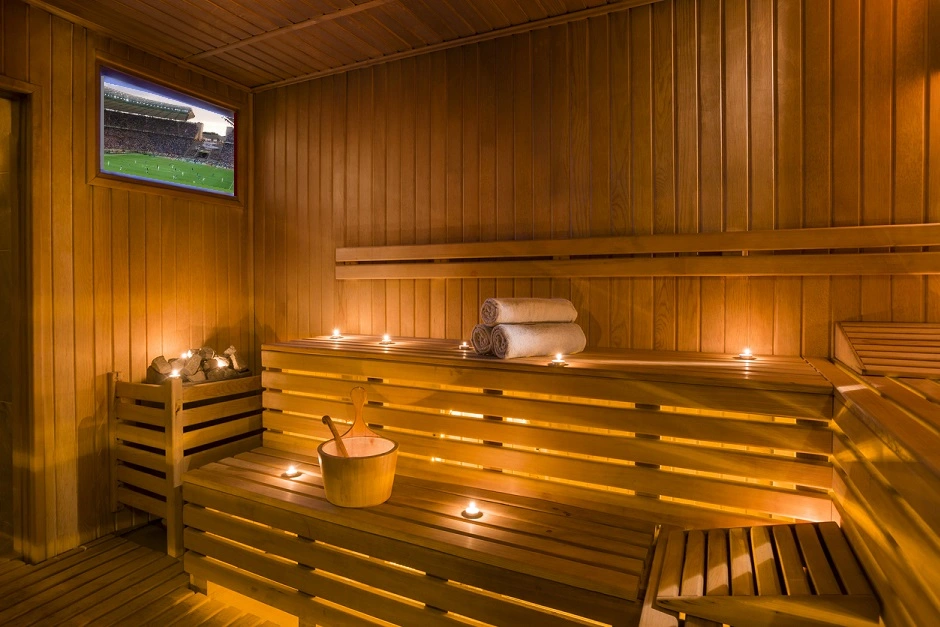
5. Sauna appeal
Several decades ago sauna in Japan was mostly used by middle-aged and older men.
Nowadays sauna is a huge hit among younger people, and some bath houses offer special treatments for women as they previously didn’t get to enjoy saunaing.
6. Sauna hobbyists
The amount of people who have sauna-going as their hobby, called sauners, rose to 16.8 million in 2023, and the trend only keeps growing.
Sauners have mostly adopted Finnish sauna culture but have also gotten inspiration from other sauna traditions, including German aufguss where a sauna master waves aromatic steam with a towel, sauna hats inspired by Russian sauna, and whisking with plants typically used in Baltic countries.
While Japan mostly has public saunas, increased from 6,000 in 2018 to over 14,000 in 2024, some sauners have started building their own private home saunas too.
Before, most saunas were located in cities, but now you can also find saunas in the countryside, near rivers, lakes, and the ocean.
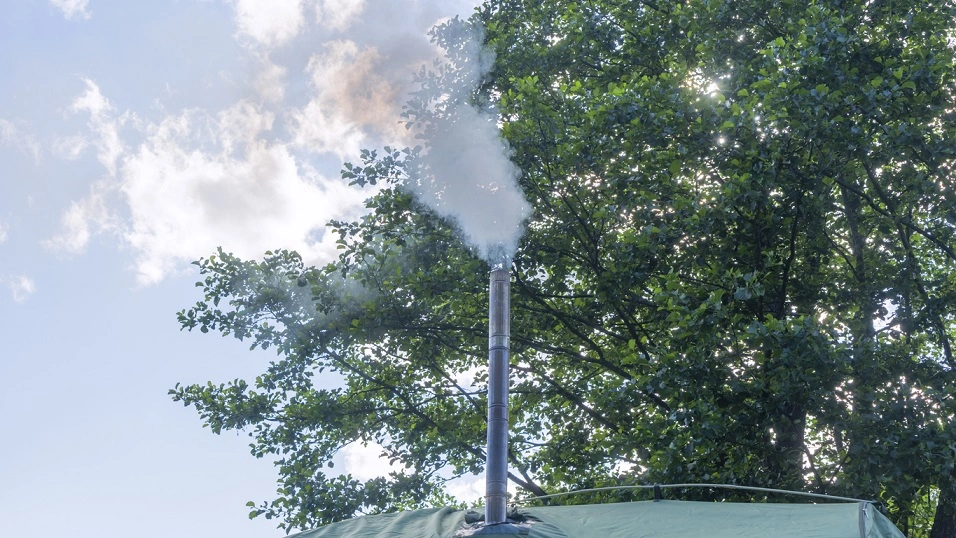
7. Absolute silence
For some establishments, sauna in Japan equals complete silence, meaning it’s forbidden to talk. The men only hotel, Ikebukuro Sauna & Capsule, in Tokyo is one example with this rule.
In Finnish sauna culture, the opposite is often the case. While a sauna is no place for a racket, it’s a safe place to open up about something that’s been bothering you. As long as you don’t talk about politics, religion, or mundane work stuff, you’re good to go!
8. Experimentation & innovation
Decades ago before the sauna boom, sauna in Japan meant an extremely hot room, up to 250 F (120 C), the nearly compulsory TV, and dry heat with no water bucket and thus löyly in sight.
These types of saunas still exist, but the Japanese have still taken huge steps to the right direction.
Once they got a taste of löyly, they’ve come up with the most innovative ways of creating it, including spreading löyly with a leaf blower!
They’ve also tried creating löyly by placing a big ice cube on top of sauna rocks, and some saunas offer buttons you’re supposed to press: when you do, you can hear a loud noise and see flickering lights as löyly is poured, or be surprised by a bucket full of cold water that’s thrown on you, for instance.
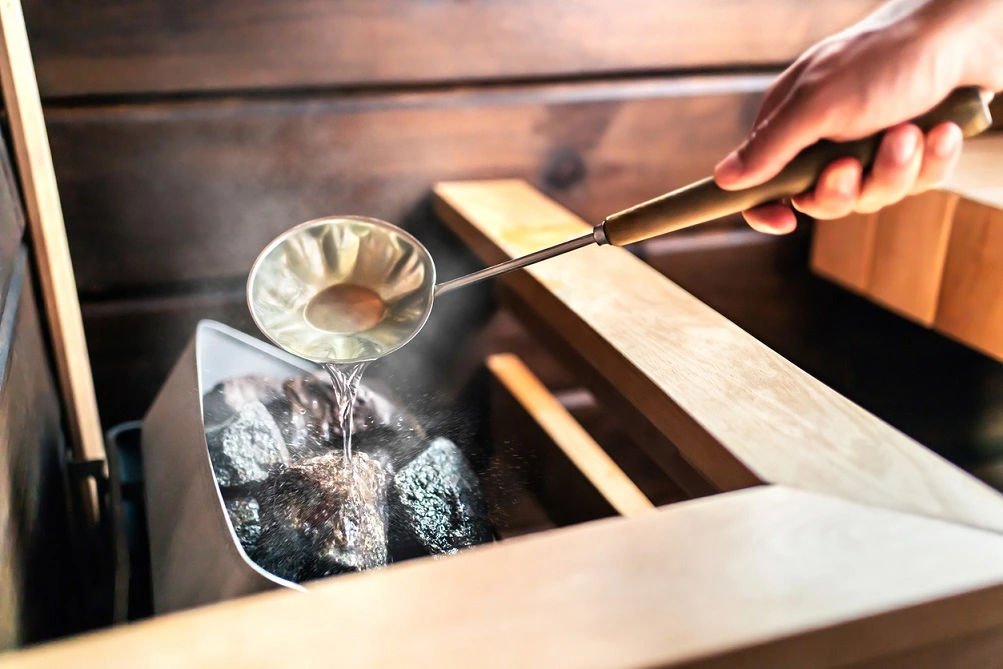
A few years ago only the trendiest bath houses let you throw löyly yourself, which is why many Japanese people are still not used to pouring water themselves; either there’s the kind of innovation mentioned above or a löyly master in charge of pouring löyly.
You can already find public saunas in Japan where you’re allowed to throw water yourself, but there may be rules as to how many times you can throw water.
9. After-sauna activities
Just like in Finland, most people in Japan relax after sauna and have something to drink and eat. Popular post-sauna drinks in Japan are beer and milk.
One post-sauna activity offered by Ikebukuro Sauna & Capsule hotel in Tokyo is reading manga as you get to choose your favorite ones from a vast collection of 10,000 comics.
10. Timekeeping & lighting
After having researched the concept of sauna in Japan for far longer than I initially thought necessary, one phenomenon started to stand out: what’s with all the clocks in Japanese saunas?

Of course the only logical explanation is to be able to track how long you’ve been to sauna.
And maybe some public bath houses and spas have ticket types that only allow you to spend a certain time in them, but still… clocks don’t belong in saunas.
I predict there will be fewer clocks in saunas in the future IF the Japanese not only talk the talk but walk the walk: how are you supposed to relax after a hectic workweek, let alone connect with nature, if you’re constantly staring at a clock?
Clocks emphasize the performance part of sauna in Japan and won’t let you break free from the chains of time.
Many saunas in Japan are more brightly lit than saunas in Finland; now it makes perfect sense too as it’s harder to tell the time in a more dimly lit space.
Luckily the Japanese have started experimenting with sauna lighting too, which is a nice change since dimmer lighting helps with relaxation and creates a calmer atmosphere.

11. Totonou (Japanese sauna vocabulary)
The two most important sauna words in Japanese are totonou and totonotta.
totonou = sauna bliss or sauna trance (a post-sauna state where you feel clean, calm, and refreshed, almost like cocooned by a natural drug, embraced by löyly)
Yes, Finns are very aware of this state too, but since they are much less poetic and artistic people than the Japanese, they either use the expression “hyvät löylyt” (good löyly) or “saunanjälkeinen raukeus” (post-sauna relaxation and calmness).
totonotta = means the same as totonou; while totonou is the uninflected form (lemma), totonotta is the past tense of totonou
Achieving that state is why sauna in Japan is so popular in the first place.
Totonou in this context was created by manga writer Katsuki Tanaka and his friends.
Other sauna words:
- Sa-meshi = sauna food
- Sa-fure = sauna friend
- Sauner = sauna hobbyist
- rouryu = löyly
- Serufu rouru, self löyly = throw löyly yourself
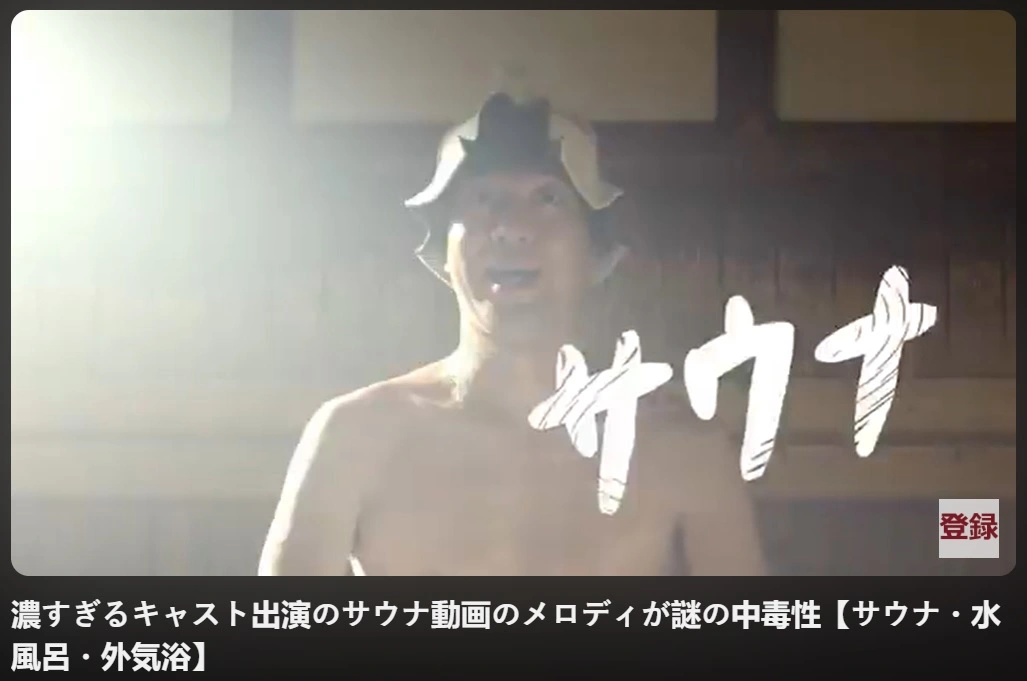
Japanese Bath Houses: onsen and sentō
In Japan, they like to combine sauna experience with traditional Japanese baths, onsen and sentō.
Is onsen a sauna? Onsen doesn’t mean sauna but is a hot spring rich in minerals. There are over 3,000 hot springs in Japan (source: Perfect sweat, 2024).
Onsen technically means the water itself, but is more commonly used to refer to the entire resort where the hot springs are located.
Onsen water can be so hot that it has to be made cooler by manual stirring that not only lowers the temperature but also makes the water feel silky soft.
Kusatsu is most known for its onsens. Most Japanese bath houses offer not only warm baths but sauna(s) too, and cold plunge pools with a temperature around 15 C.
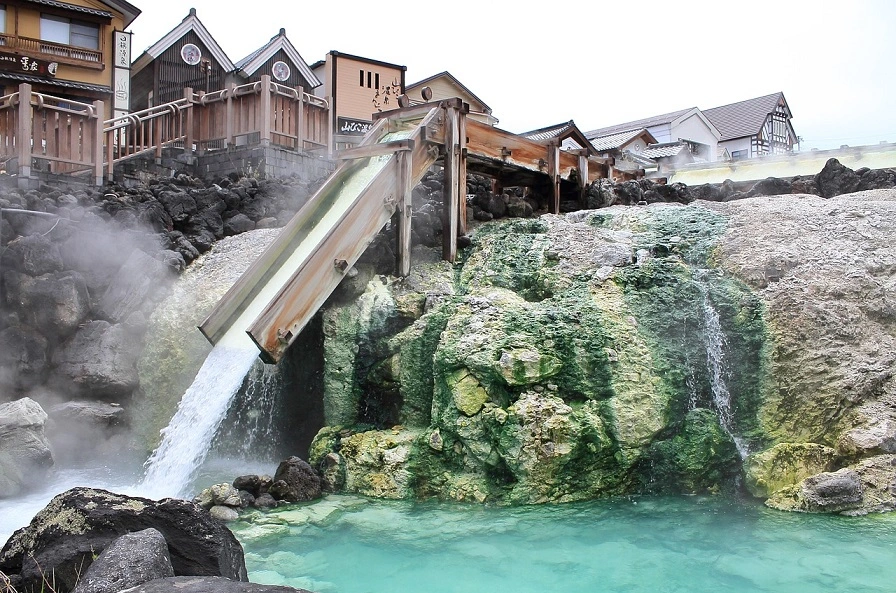
Since most onsens are natural hot springs, they are few in Tokyo and other urban areas, which is why cities offer sentō bath houses that have artificially warmed up water.
Historically, people didn’t have bathrooms in their homes, so sentō bath houses were used for bathing. Nowadays they’re mostly for relaxing.
If you’re wondering what to wear in a Japanese sauna, typically people bathe naked in sentō pools and can go to sauna naked too (not in unisex saunas).
The Japanese seem to view nudity much like the Finnish, meaning it’s not only okay but sometimes the only correct way to sauna and bathe. Some spas and saunas in Japan that have separate sections for men and women may forbid wearing any clothes while others provide detailed instructions on what to wear.
What about the price of sauna in Japan? Sentōs are more affordable than onsens, and both bath houses typically offer sauna(s) too.
Getting in to a sentō in Tokyo costs less than 5 dollars, but you may have to pay a couple dollars more to access the sauna(s).
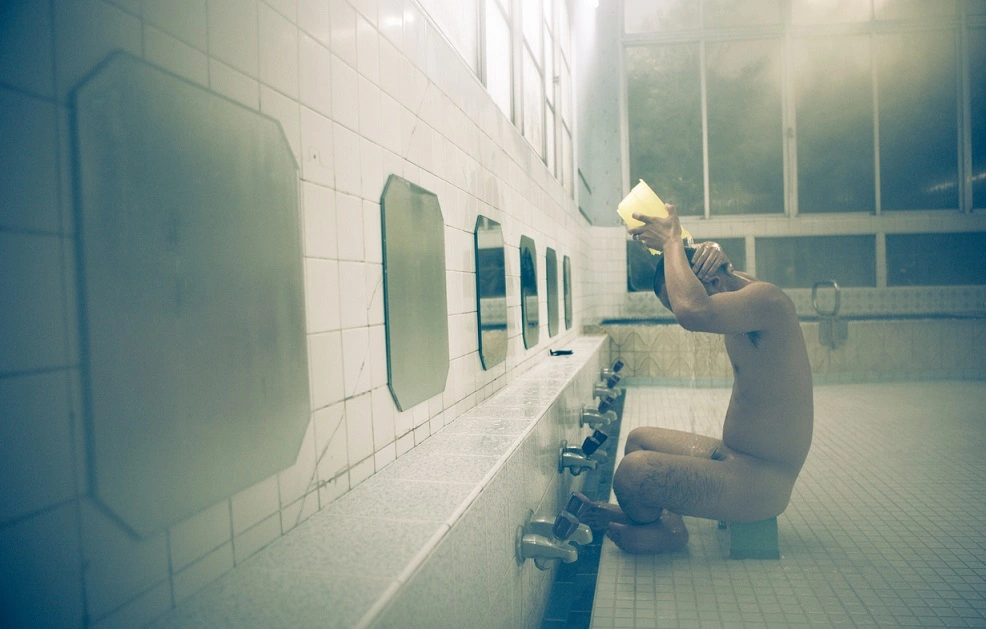
Sauna in Japan: (Ancient) Types of Saunas, Mostly Still in Use
Long before the Finnish sauna reached Japan, the Japanese had a special relationship with steam, and water in general as it was considered sacred, cleansing, and a force that gives life.
For centuries, the Japanese have bathed in furo that originally meant a steam bath. Digging even deeper etymologically, we get a word muro that means a basement or cellar.
These underground cellars and caves were used for hot air and steam baths, achieved by rocks warmed with fire (Laatikainen, 2019, p. 43-44).
What is a Japanese sauna called? There are several sauna types in Japan, so let’s see what meanings the below Japanese sauna names carry, using Perfect Sweat (2024) as a reference.
Kama-buro
- originated in 7th century Yase, Kyoto
- originally a wood-fired sweat room, nowadays an oil stove can be used to heat it; the base you lie on has been doused in salt water that creates soft steam
- you lie down on a towel and have a ceramic “pillow” under your head
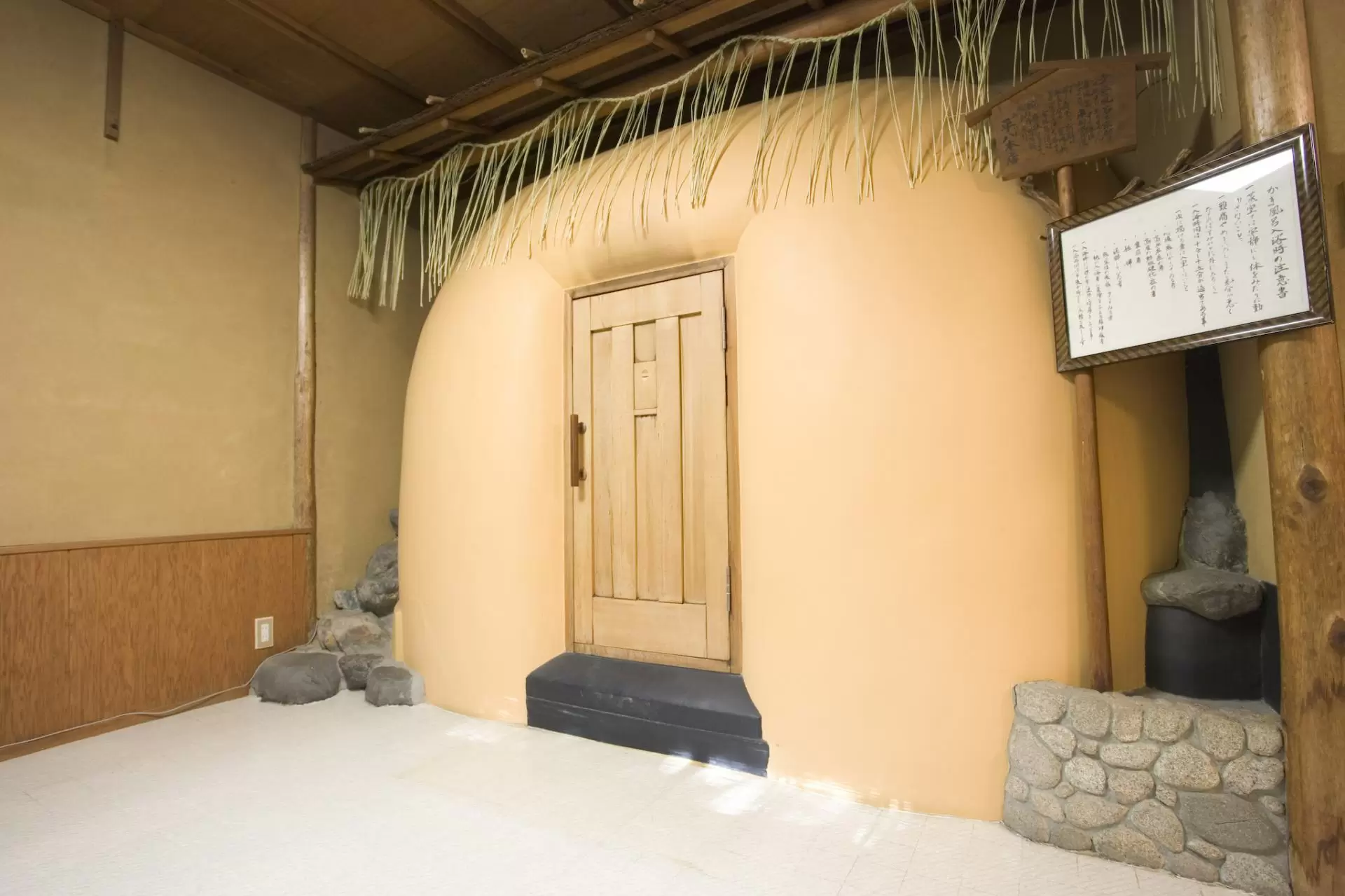
Mushi-buro
- a steam room used historically by Zen monks for meditation in Kenninji, Kyoto; no longer in use
- resembles a tiny house you crawl into, with the lowest “story” having on oven and a water container on top of it, creating hot steam
- the steam rose up through the floor, via gaps in between floor boards; the floor was too hot to sit on, so monks needed a piece of cloth under their butt
Komoru sweat ceremony
- this holy ceremony is offered by the Yamabushi, mountain dwellers and practitioners of Shugendō in Dewa Sanzan
- komoru refers to withdrawing to a tight place (in this case, a tent), the goal of which is to build character and form a deeper connection to nature through sweat, steam, and smoke
- this kind of retreat makes you feel reborn
Fukashi-buro
- a steam bath found in Yamagata which is known for onsen as well
- the sauna room floor has small holes through which warm steam rises from onsen hot springs
- you can direct the steam to any body part you like, preferably to areas where you have aches and pains since the heat relieves pain
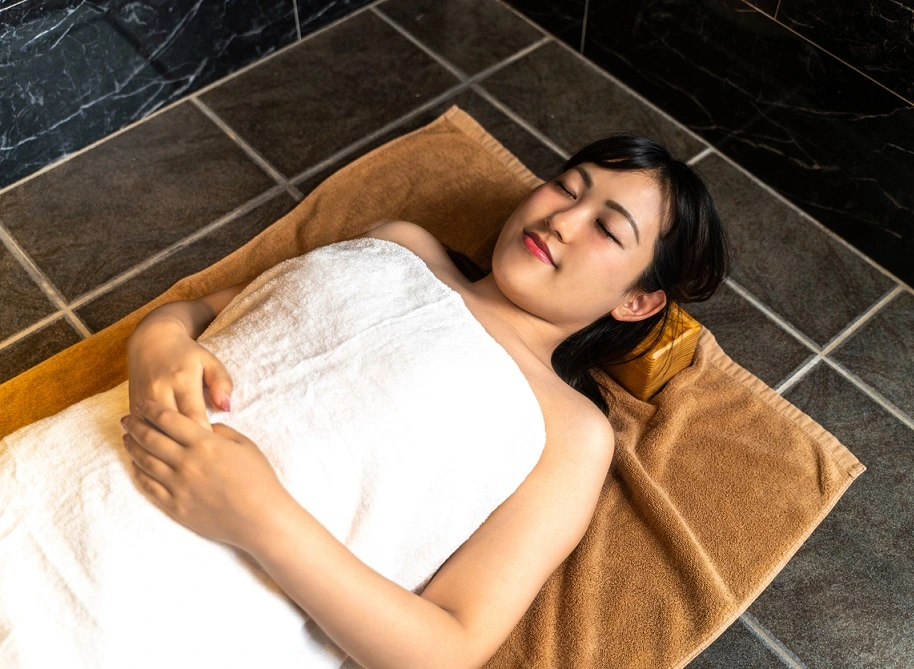
Kara-buro
- this traditional sweat bath was built by a monk 700 years ago and is still in use in Sanuki, Shikoku
- so hot (allegedly 150 C) that you have to protect your skin from burning with clothing and blankets; although this kind of heat sounds extreme (and would be deadly if combined with löyly), dry heat is easier to bear than humid heat
- wood-fired, no steam, and no water; true fans feel kara-buro is the best sauna in Japan as the heat feels very natural and relieves pain
Rinkan sauna
- this very modern take on sauna in Japan is only “ancient” because of rinkan chanoyu that means post-bath tea and art enjoyment, dating back to the 15th century
- located in Tokyo, TeamLab offered 7 saunas with different themes: each had its own temperature, scent, sound, and color scheme
- bathers altered between hot and cold (saunas and cold plunging), combined with enjoying tea and art; the idea is that art is more immersive after sauna has made you feel relaxed
There’s surprisingly little information available on historical saunas in Japan since even most Japanese people aren’t aware of them.
That’s exactly why I want to thank Mikkel Aaland for introducing all these historical saunas in his eye-opening documentary series Perfect Sweat (2024). Without him, the (English-speaking) world would know very little about ancient Japanese saunas.
He’s so respectful that he doesn’t even call them saunas but sweat baths, steam baths, and so on. Having written about the real definition of sauna, I appreciate that immensely.
Final Thoughts
In the beginning of this article I wrote how crazy the Japanese are about Finnish sauna. After all, that’s what all the sources say: sauna in Japan is blooming like never before.
I wanted to test how well that shows in practice, and was able to spot several Finnish sauna products while watching the Japan episode of Perfect Sweat (2024):
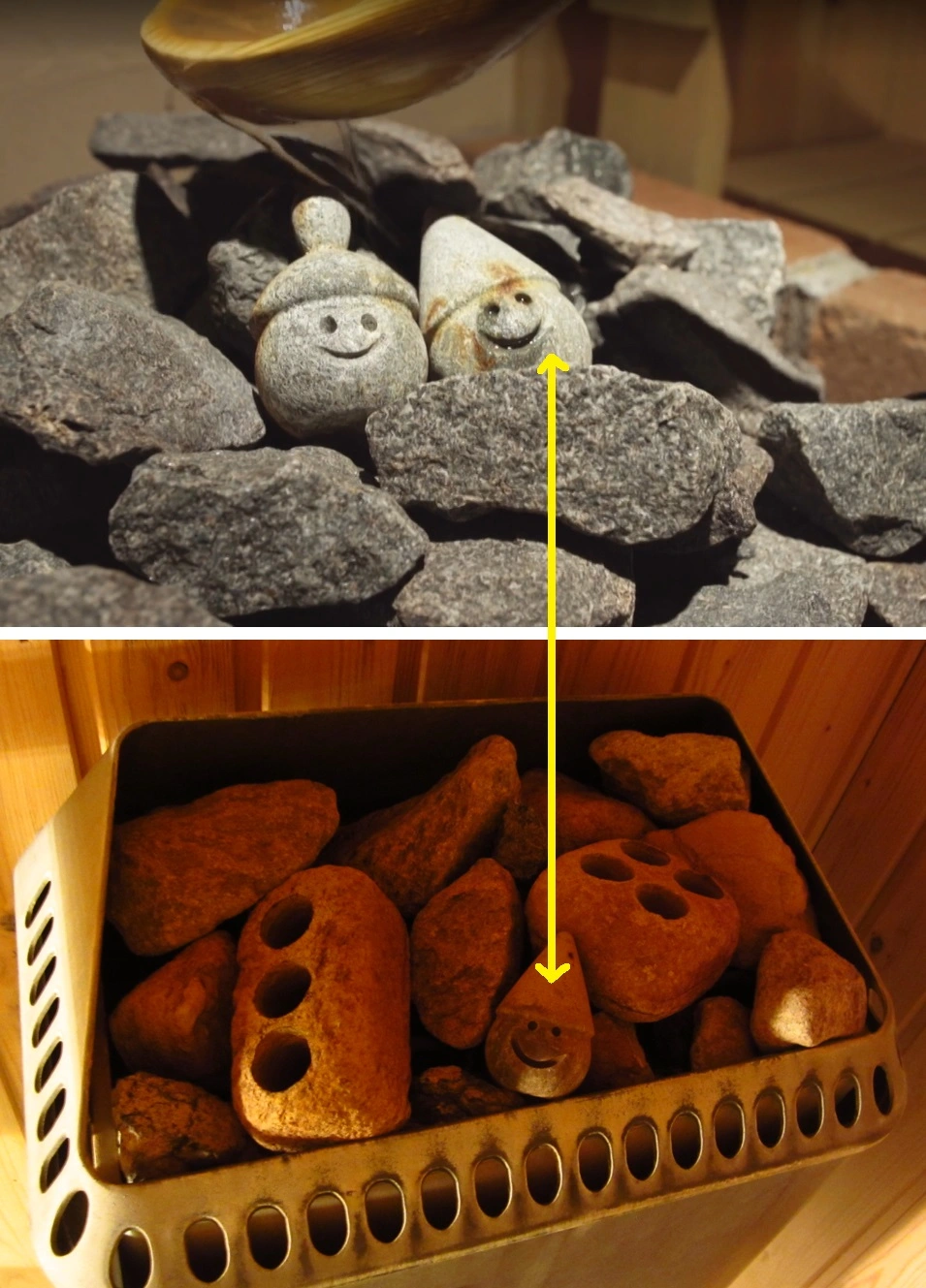
Above we have the same decorative sauna rock; the first one is in TeamLab’s sauna in Tokyo while the second is in my dad’s sauna. It was actually me who gifted him that sauna elf a long time ago.
It’s from the same Finnish brand, Hukka, as my steam stones with holes. The boy elf is called Tahvo and the girl is Elli. They’re made of soapstone. They both look great in Japan too!
Elli reminds me of a happy Little My that both the Japanese and Finns love (ちびのミイin Japanese, Pikku Myy in Finnish).
The next Finnish sauna product I found in Japan, depicted by Perfect Sweat, is also sturdy and solid:

More sauna rocks! These Kerkes ceramic rocks from Finland are extremely durable and more common in public than home saunas. They’re expensive compared to natural sauna rocks, but also last a lot longer.
Only the rocks on top are in this size and have this indented pattern; the ones you use below them are bigger, rounder, and without indents.
None of this trivia is shown in the series, but it’s fun for me to be able to tell things like these! What kind of sauna blog would this be if I couldn’t?
So I guess all the claims are true: Finnish sauna is thriving in Japan, down to the rocks, decorations, and löyly that the Japanese sometimes pour with a watering can. That’s never done in Finland but personally I think it’s a genius idea. I have to try it myself one day!
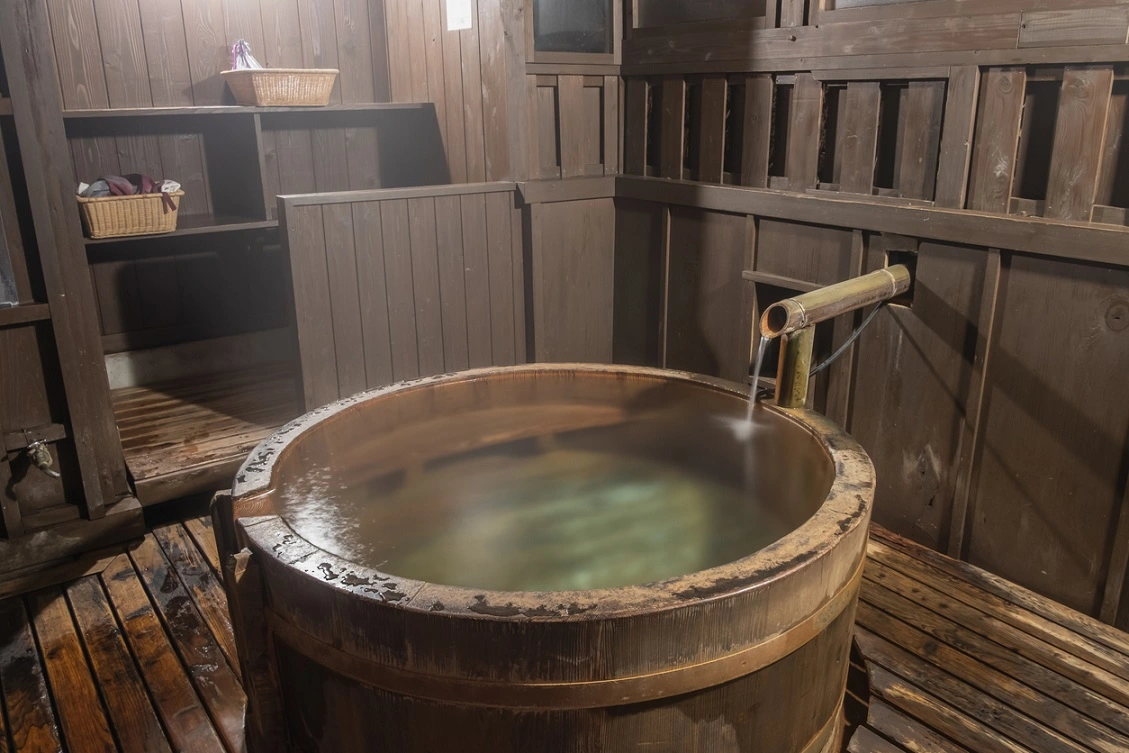
Sources:
Everything about sauna in Japan (in Finnish)
Interview with Japan’s Sauna King Hiroshi Ota (in Finnish)
Japan’s Sauna King visits Finland (in Finnish)
Perfect Sweat (2024), episode 4: Japan
Sauna in Japan and Tokyo Olympics (in Finnish)
Laatikainen, Satu (2019). Saunan kansa. Suomalaisen kirjallisuuden seura.
